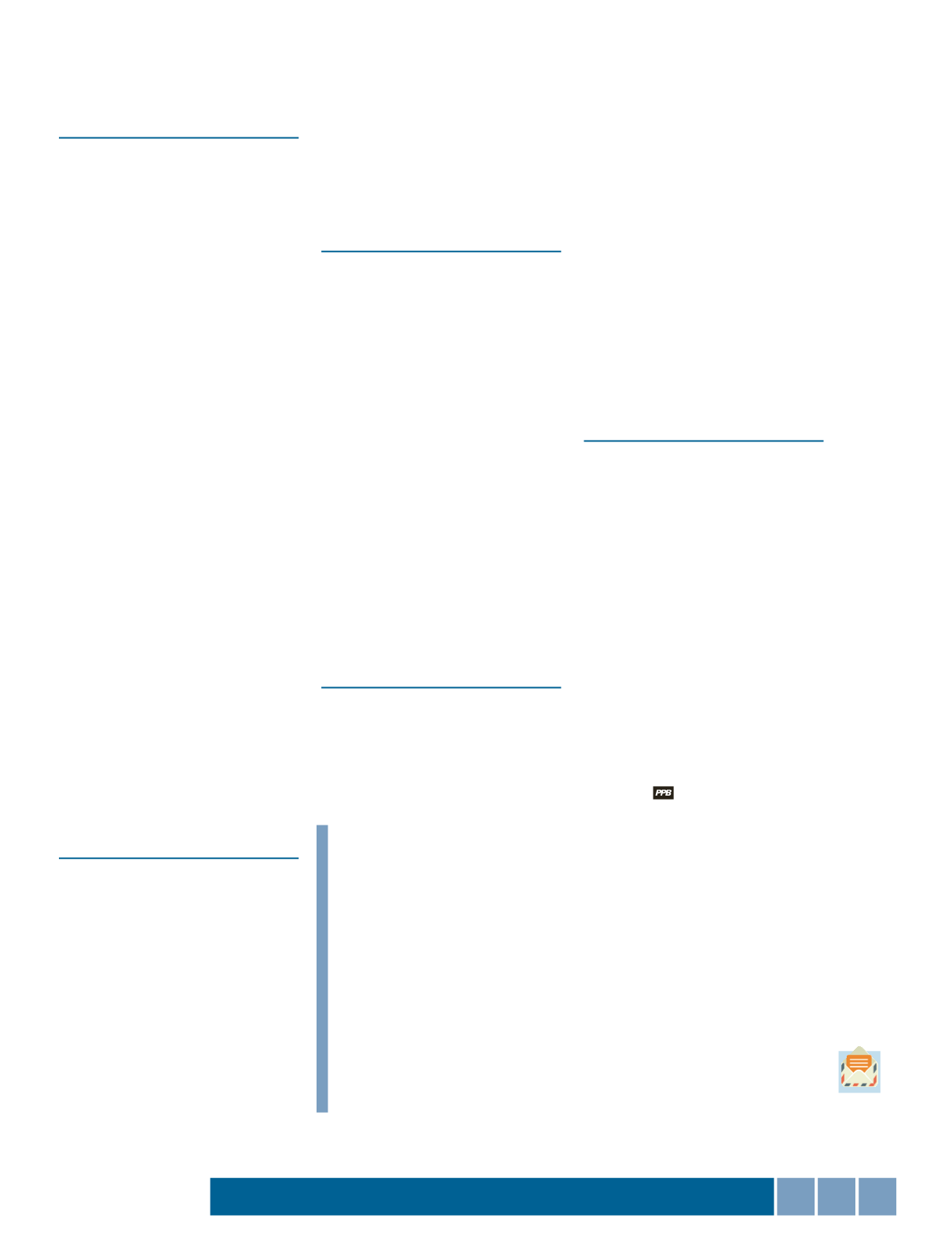

an inventory level that can be monitored
on a daily basis.
Dale Tyler
Owner
Crossroad Striping
For a small business, making the
decision to invest valuable dollars into
inventory can result in a “but what if this
happens?” frame of mind, but it doesn't
have to. When a small-business owner
decides it’s time to increase his or her
inventory there is typically an expecta-
tion of increased product or services sales
somewhere in the near future. It’s possi-
ble, with some amount of effort, to
lessen the worries of money spent
against the promise of increasing busi-
ness. Without any hesitation, ask your
customers what they will need, how
much they will need and what their
expectations are. Most important, ask
about the time frame from sale to pay-
ment. Not knowing these answers comes
at the expense of your company.
Finally, build trust and have open
conversations with your suppliers. Share
your “but what if this happens?” ques-
tions. You’ll still owe money for any
product or merchandise your company
purchases, but you and your suppliers will
have discussed a practical plan for solving
any issues. Remember, they want to keep
your business in the same way you want
to retain the customers you have, and
most reputable suppliers will have solved
these problems in the past. Just keep the
lines of communication open and try not
to have areas of unknown expectations.
William Bauer
Managing Director
Royce Leather
UPIC: royce
The key in ensuring profitability in
the case of deliberation merchandise and
slow-moving items is to make sure they
carry a higher margin than faster-moving
items. They have to, in essence, “pay the
rent” for all the time they sit on the shelf.
This is also true in fashion merchandise,
as it may also include items that have a
very high possibility of obsolescence, such
as consumer electronics that may be
replaced by a newer model with more
features or a lower price. Fashion mer-
chandise has to carry a higher initial
gross profit to accommodate the mark-
downs that will surely occur over the life
of the item.
Julie Austin
Inventor/Speaker
Swiggies
Besides pricing, inventory manage-
ment is one of the toughest things for a
product entrepreneur. One thing you
have to think about it where you’re going
to stock that inventory. Consider the cost
of keeping it in either a warehouse or a
fulfillment company. Both can get pretty
expensive over time and have to be fac-
tored into your budget, especially if it
doesn’t sell as quickly as you planned.
Also, don’t stock up too much on a
new product, color or size before knowing
how well it’s going to sell. No matter how
much you think you know about your
product, you never really know until people
start buying it. If you find one color or
style is selling great and another isn’t, con-
sider paring down to fewer colors or styles.
Craig Wolfe
President
CelebriDucks And Cocoa Canard
You never want to get stuck with
too much inventory. On the other hand,
as a good business associate once told
me, you can never sell from an empty
wagon. It’s an artful balance of when to
order more inventory and thus take on
more debt. If you have items that are
selling, it is a worthwhile investment to
always keep hot items in stock. If you
have done market research and can
make an educated forecast that a new
line is going to be very popular, you
have to take the leap of faith and get it
in ahead of time. For example, if a big-
time blockbuster is coming out and
there is merchandise associated with it
that you know will be very popular, you
only have a window for so long. Market
research and seeing what is popular out
there is key.
Bob Shirilla
Owner/Manager
Simply Bags
We are an e-commerce business, so
we monitor our 2,000 organic search
rankings weekly. When we see a substan-
tial rise or fall in a particular keyword
ranking, we adjust our on-hand reorder
points. At times, this has created a sub-
stantial change in inventory.
Before bringing on new product
lines, we perform a market test. For
example, in 2010 we introduced our
beach bags. We used Google AdWords
and Vendor Drop Ship programs to dis-
cover, test and implement our beach bags
before investing in inventory and costly
advertising.
DO YOU HAVE THE ANSWER?
Q
A Distributor Asks:
If a job has been pre-paid and the end user refuses to pay for the shipping,
even though the order stated “plus shipping,” what is the recourse for the distribu-
tor? Is the shipping deducted from the salesperson’s commission or does the distribu-
tor write it off as a loss?
What’s your answer?
Email answers along with your name, title and com-
pany name to
Question@ppai.orgby June 30 for possible inclusion in an
upcoming issue of
PPB
magazine.
18 •
PPB
• JUNE 2015
INNOVATE
















